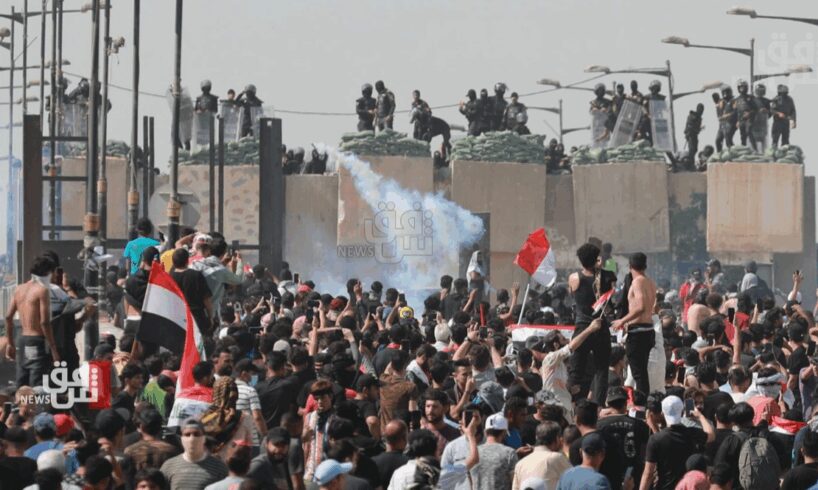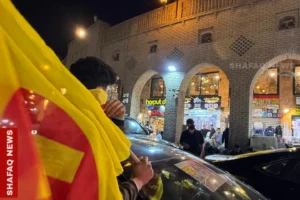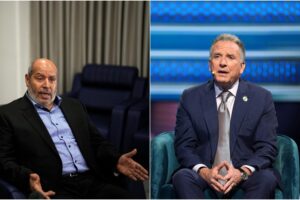
Shafaq News
Iraqis are marking the sixth anniversary of the protests that
erupted in October 2019, when hundreds of thousands of young people flooded the
streets in the largest popular uprising since 2003.
They rallied under a slogan that became a national symbol of
aspiration: “We want a homeland.” The phrase reflected the demands of a
generation seeking a country that respects their dignity, provides jobs and
essential services, and reinforces their sense of belonging and sovereignty.
The demonstrations came at a heavy cost. More than 600
people were killed and thousands more were injured, detained, or disappeared,
according to local and international rights groups.
Human rights activist Mohammed Jumaa described the uprising
as “a national revolution that transcended generations,” driven by the dream of
a country “that cannot be bought or sold.”
Stressing that the dream “has not died but has been
postponed,” he predicted a resurgence of protest spirit, though “not before or
immediately after the upcoming November 11, 2025, elections.”
Jumaa also underlined that the political landscape remains
largely unchanged, pointing out that some former protest leaders who entered
parliament “disappointed expectations and failed their responsibilities.”
Protest-born MPs
In the years following the October uprising, some activists
transitioned from the streets to parliament. Their entry into the chamber was
viewed as evidence that the protest movement had nudged Iraq’s political system
to open a narrow door for new voices.
Researcher Omar al-Nasser, speaking to Shafaq News,
described the uprising through multiple dimensions. In the collective memory,
it endures as a “living symbol of dignity and sovereignty” and a rejection of
power-sharing and corruption.
Politically, the movement compelled concessions, including
the resignation of then-prime minister Adel Abdul Mahdi, reforms to the
election law, and the introduction of new faces to parliament, even though some
of these newcomers “exploited the revolutionary wave opportunistically.”
From the outset, these MPs entered a complex political
landscape. Some sought to channel the spirit of Tishreen into lasting political
influence by forming new parties. Emtidad emerged directly from the protest
squares, while other activists aligned with the New Generation Movement also
aimed to leave their mark. Figures such as Ali al-Badiri of Emtidad and Sarah
al-Jabri of New Generation came, as they expressed, to represent the hope that
Tishreen could reshape Iraq’s politics from within.
The protests’ most immediate legislative outcome was a new
Electoral Law, which enabled early elections in October 2021. That vote
produced a mixed map: Emtidad secured nine seats, New Generation another nine,
Ishraqat Kanoon six, and independents a notable 43 seats, according to official
results. On paper, this resembled a modest political earthquake.
By contrast, the parliaments of 2014 and 2018 remained
dominated by established blocs: Nouri al-Maliki’s State of Law, the Patriotic
Shiite Movement led by Muqtada al-Sadr (formerly the Sadrist), and the Kurdish
giants KDP and PUK. The 2021 chamber, for the first time, combined these
heavyweight parties with dozens of newcomers who had risen on a wave of popular
anger.
Read more: Financial muscle: How money shapes Iraq’s upcoming elections
Power Absorbed
Yet the newcomers were never a unified force. Emtidad itself
was soon hit by internal splits and defections. Attempts to forge a “Tishreen
bloc” collapsed, leaving the protest-born MPs fragmented and isolated. Their
numbers in parliament were too small — and their alliances too fragile — to
challenge the entrenched Shiite, Sunni, and Kurdish parties that continued to
control the machinery of government.
Where they did make an impact was in shifting tone. For the
first time, the parliament floor carried demands for accountability over the
killings of protesters, calls to dismantle corruption networks, and appeals to
introduce a youth-driven civil agenda into debates long dominated by sectarian
bargaining. Their speeches and interventions compelled senior politicians to at
least acknowledge these issues in public.
The shortcomings, however, were just as clear. Many
independents never developed a joint strategy, while others entered tactical
deals with the very factions they had pledged to oppose. Traditional blocs
proved adept at absorbing the momentum of protest by offering alliances,
committee seats, or local influence. What began as an insurgent presence in
parliament gradually thinned into scattered voices, some of which activists
openly branded as opportunists.
Security threats further weakened their influence. A series
of abductions and threats targeted activists and lawmakers linked to the
protest movement, creating a climate of fear that pushed some into silence and
others into retreat from frontline politics.
By 2023, much of the hope that Tishreen’s representatives
would evolve into a coherent reformist bloc had faded, replaced by
disillusionment over their fragmentation, vulnerability, and compromises.
Read more: Money, power, and ballots: Iraq’s struggle against electoral fraud
Culture Endures
Six years after Iraq’s mass protests, analysts note that
their economic and social impacts remain uneven. Unemployment and inadequate
public services persist despite some reform efforts, while youth face
particularly high barriers: a 2020 World Bank report recorded joblessness above
30% among 15–24-year-olds, while the Iraqi Ministry of Labour and Social
Affairs reported youth unemployment at 35–36% in 2024.
This economic stagnation has contributed to migration. Net
migration indicators and analyses by the International Organization for
Migration (IOM) showed that Iraq experienced negative net migration in the
early 2020s, with tens of thousands leaving the country annually. Reports
further highlighted substantial emigration among youth and skilled
professionals, describing a brain drain driven by limited opportunities and
insecurity.
Despite these challenges, the protests sparked significant
social changes, fostering civic awareness and youth leadership networks that
continue to influence national discourse.
Civil society activist Suhaila Al-Asim described the
anniversary as both a historical milestone and a renewed call to uphold the
principles that prompted Iraqi youth to take to the streets: “freedom,
sovereignty, social justice, and human dignity.”
Speaking to Shafaq News, Al-Asim also emphasized that the
protests transformed public spaces into hubs for dialogue, creativity, and
popular solidarity, even amid repression and violence.
Additionally, the movement left a lasting mark on youth
culture. Slogans, street art, and music that originated in Baghdad’s Tahrir
Square spread nationwide, with graffiti and murals still visible in southern
cities as reminders of defiance.
Digital media amplified the movement further, with hashtags
and livestreams creating new activist networks. Analysts now speak of a
“Tishreen generation” entering NGOs, student unions, local journalism, and
community initiatives, carrying the protest ethos into civil society despite
political setbacks.
Read more: Iraq’s democratic malaise: Challenges mount ahead of 2025 Elections
Legacy Questioned
As Iraq heads toward its parliamentary elections, the public
mood remains unsettled. Many Iraqis feel that promises of reform remain unmet,
while limited surveys point to modest improvements in perceptions of government
performance and security in parts of the country.
Yet distrust in established parties endures, and memories of
past disappointments fuel widespread fears of weak turnout. Figures from recent
elections highlight the depth of disillusionment. In 2021, voter involvement
fell to a historic low of 41.05%, with just over nine million ballots cast out
of more than twenty-two million eligible citizens.
The December 2023 provincial elections showed a similar
pattern, registering around 41% overall. In districts such as Baghdad’s al-Sadr
City, where Muqtada al-Sadr’s boycott call resonated, polling stations were
largely empty, reflecting how apathy, political pressure, and fear combined to
suppress engagement. Analysts caution that the same dynamics could shape the
national vote.
For those who rose during the October 2019 Tishreen
protests, the risks of renewed political involvement remain high. Attempts to
contact lawmakers linked to the uprising often meet silence: many decline to
speak publicly or insist on anonymity, citing disappointments with political
outcomes and concern for their families’ safety.
International rights groups continue to document
intimidation campaigns that have left many activists on the sidelines,
unwilling to reenter the dangerous space of street politics.
For many Iraqis, the Tishreen uprising embodies the
contradictions of recent history: lofty hopes met with bitter disappointments,
immense sacrifices yielding only partial gains, and youthful aspirations
constrained by deeply entrenched structures.
Written and edited by Shafaq News staff.
Read more: Iraq’s Gen Z faces choice: Vote or boycott in 2025 elections




